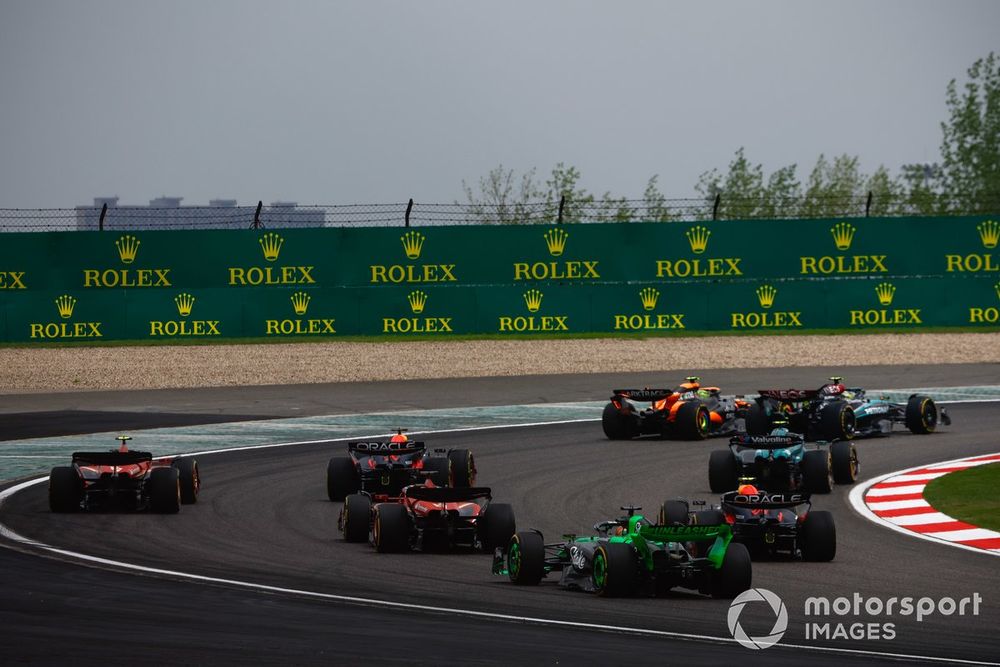Autosport can reveal that one of the items up for discussion at next week’s meeting of the Formula 1 Commission is whether or not the way the jump start regulations are currently framed is fit for purpose.
At the moment, a jump start is defined entirely based on whether or not any movement is detected by FIA-supplied transponders before the start signal is given.
However, there have been several occasions where it has appeared that cars did move before the red lights went out but were not sanctioned because the sensors did not detect it.
The most recent famous example of this, with Lando Norris at this year’s Saudi Arabian Grand Prix, is understood to have triggered the debate about whether or not the regulations should be updated.
In Jeddah, while Norris was visibly seen to have moved forward and then stopped before the lights changed, the FIA stewards ruled that he had been within the rules because the sensor had not been triggered.
A statement issued at the time said: “The stewards reviewed positioning/marshalling system data, video and determined that the video appeared to show that car 4 [Norris] moved before the start signal was given.
«However, the FIA-approved and supplied transponder fitted on the car did not indicate a jump start.

Sir Lewis Hamilton, Mercedes F1 W15, leads Lando Norris, McLaren MCL38, Fernando Alonso, Aston Martin AMR24, Max Verstappen, Red Bull Racing RB20, and the rest of the field at the start of the Sprint
Photo by: Zak Mauger / Motorsport Images
«Article 48.1 a) of the Formula One Sporting Regulations states clearly that the judgment of whether or not there was a jump start is to be made in accordance with the transponder, which did not show a jump start. In the circumstances, we took no further action.»
Subsequent discussions between team managers and the FIA in recent weeks, including at this weekend’s Chinese Grand Prix, have triggered the idea that there could be grounds to tweak the rules going forward.
So, beyond the transponders remaining in place to detect illegal movement, jump starts could also be deemed to have taken place if F1 race control has video evidence that clearly shows the car moving even if it has not been picked up by the sensors.
Although it is unclear how much support there is for a change, it is understood that if the F1 Commission hits a super-majority – which requires eight teams backing it beyond the FIA and FOM – then the rule tweak could come into force for as early as the Miami Grand Prix.
Sources suggest that not all outfits are in favour though, with some expressing concern about jump starts becoming a subjective matter based on the opinion of individuals.
Instead, they suggest that efforts should be more focused on improving the sensitivity and accuracy of the sensors to ensure they are better able to detect all movements.
The issue of drivers appearing to jump the start but the sensors not being triggered has cropped up several times in recent years.
Valtteri Bottas was previously cleared for a jump start in the 2020 Hungarian Grand Prix while one year earlier, then Ferrari driver Sebastian Vettel similarly escaped punishment in Japan.